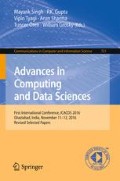Abstract
Regular monitoring of the anaesthetic drug dosage during a surgery is required to avoid the patient’s inter operative awareness due to inadequate levels of anaesthesia. The traditional methods of assessing the anaesthetic depth levels such as heart rate, blood pressure, pupil size, sweating, etc are not very accurate as these responses may differ from patient to patient depending on the type of surgery and the anaesthetic drug administered. Sometimes during the process of anesthesia some time delay may occurs and this time delay is very dangerous for our life during anesthesia. In this paper Transport delay that comes in the process of annesthesia have investigated and analysed. Z-Transform have been shown its incapability for fractional time delay processes. So, Modified Z-Transform is preffered for fractional time delay processes. Further effect of this time lag (Transportation delay) on system performance is minimized with PID controller. Relative, absolute stability have been calculated through which blood pressure is effectivly controlled during annesthesia.
Access this chapter
Tax calculation will be finalised at checkout
Purchases are for personal use only
References
Taheri, M., Ahmadi, B., Amirfattahi, R., Mansouri, M.: Assessment of depth of anesthesia using principal component analysis. J. Biomed. Sci. Eng. 2, 9–15 (2009)
Bailey, J., Haddad, W., Im, J., Hayakawa, T., Nagel, P.: Adaptive and neural network adaptive control of doa during surgery. In: Proceedings of the American Control Conference, pp. 3409–3414, Minneapolis, Minnesota, USA, 14–16 June 2006
Rabbani, H., Dehnavi, A.M., Ghanatbari, M.: Estimation the depth of anesthesia by the use of artificial neural network. In: Proceedings of the Artificial Neural Networks - Methodological Advances and Biomedical Applications, pp. 283–302 (2011)
Mallat, S.G.: A Wavelet Tour of Signal Processing: The Sparse Way. Academic Press, San Diego (2009)
Srinivasan, V., Eswaran, C., Sriraam, N.: EEG based automated detection of anesthetic levels using a recurrent artificial neural network. J. Med. Syst. 7, 267–270 (2005)
Moerman, N., Bonke, B., Oosting, J.: Awarness and recall during general anesthesia: facts and feelings. Anesthesiology 79, 454–464 (1993)
Huang, J.W., Lu, Y., Nayak, A.: Depth of anesthesia estimation and control, IEEE Trans. Biomed. Eng. 46
Gibbs, G.A., Gibbs, E.L., Lennox, W.G.: Effect on the electroencephalogram of certain drugs which influence nervous activity. Arch. Int. Med. 60, 154–166 (1937). (pp. 71-81, 1999)
Watt, R.C., Navabi, M.J., Scipione, P.J., Hameroff, S.R., Maslana, E.S.: Neural network estimation of anesthetic level using EEG spectral signatures. Ann. Int. Conf. IEEE Eng. Med. Biol. Soc. 12(5), 2017–2018 (1990)
Kelly, S.D.: Monitoring Consciousness Using the Bispectrum Index during Anaesthesia, A pocket guide for Clinicians, Aspect medical systems (2007)
Furutani, E., Bao, S., Araki, M.: A-TDS: a CADCS package for plants with a pure delay. In: Jamshidi, M., Herget, C.J. (eds.) Recent Advances in Computer-Aided Control Systems Engineering, pp. 247–272 (1992)
Astron, K.J., Huggland, T.H.: New tunning methods for PID Controllers. In: Proceedings of the 3rd European Control Conference (1995)
Dorf, R.C., Bishop, R.H.: Modern Control Systems, 7th edn. Pearson Prentice Hall, Upper Saddle River (2016)
Manitius, A., Olbrot, A.W.: Finite spectrum assignment problem for systems with delays. IEEE Trans. Autom. Contr. AC-24(4), 541–553 (1979)
Onodera, H., Maetani, S., Aung, T., Kan, S., Sakamoto, T., Shirakami, G., Furutani, E., Araki, M., Imamura, M.: Clinical application of a blood pressure autoregulation system during hypotensive anesthesia. World J. Surg. 23, 1258–1263 (1999)
Author information
Authors and Affiliations
Corresponding author
Editor information
Editors and Affiliations
Rights and permissions
Copyright information
© 2017 Springer Nature Singapore Pte Ltd.
About this paper
Cite this paper
Gupta, V., Kanungo, A., Ojha, P.C., Kumar, P. (2017). Blood Pressure Control During Anaesthesia With and Without Transport Delay. In: Singh, M., Gupta, P., Tyagi, V., Sharma, A., Ören, T., Grosky, W. (eds) Advances in Computing and Data Sciences. ICACDS 2016. Communications in Computer and Information Science, vol 721. Springer, Singapore. https://doi.org/10.1007/978-981-10-5427-3_26
Download citation
DOI: https://doi.org/10.1007/978-981-10-5427-3_26
Published:
Publisher Name: Springer, Singapore
Print ISBN: 978-981-10-5426-6
Online ISBN: 978-981-10-5427-3
eBook Packages: Computer ScienceComputer Science (R0)

